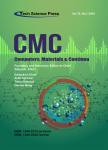Time Optimization of Multiple Knowledge Transfers in the Big Data Environment
作者机构:School of Economy and ManagementChangsha University of Science&TechnologyChangsha410114P.R.China College of Information System and ManagementNational University of Defense TechnologyChangsha410073China School of Computer&Communication EngineeringChangsha University of Science&TechnologyChangsha410114China
出 版 物:《Computers, Materials & Continua》 (计算机、材料和连续体(英文))
年 卷 期:2018年第54卷第3期
页 面:269-285页
核心收录:
学科分类:0202[经济学-应用经济学] 02[经济学] 020205[经济学-产业经济学]
基 金:supported by the National Natural Science Foundation ofChina (Grant No. 71704016,71331008, 71402010) the Natural Science Foundation of HunanProvince (Grant No. 2017JJ2267) the Educational Economy and Financial Research Base ofHunan Province (Grant No. 13JCJA2) the Project of China Scholarship Council forOverseas Studies (201508430121, 201208430233)
主 题:Big data knowledge transfer time optimization DEP simulation experiment
摘 要:In the big data environment, enterprises must constantly assimilate big dataknowledge and private knowledge by multiple knowledge transfers to maintain theircompetitive advantage. The optimal time of knowledge transfer is one of the mostimportant aspects to improve knowledge transfer efficiency. Based on the analysis of thecomplex characteristics of knowledge transfer in the big data environment, multipleknowledge transfers can be divided into two categories. One is the simultaneous transferof various types of knowledge, and the other one is multiple knowledge transfers atdifferent time points. Taking into consideration the influential factors, such as theknowledge type, knowledge structure, knowledge absorptive capacity, knowledge updaterate, discount rate, market share, profit contributions of each type of knowledge, transfercosts, product life cycle and so on, time optimization models of multiple knowledgetransfers in the big data environment are presented by maximizing the total discountedexpected profits (DEPs) of an enterprise. Some simulation experiments have beenperformed to verify the validity of the models, and the models can help enterprisesdetermine the optimal time of multiple knowledge transfer in the big data environment.



